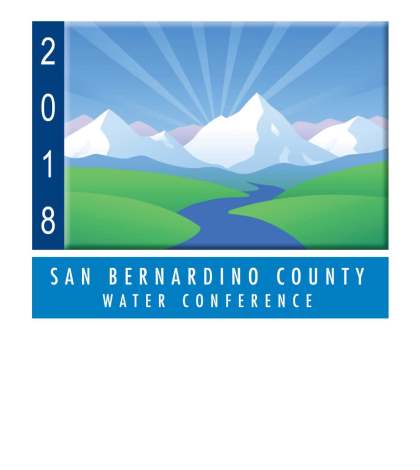Friday’s 12th Annual San Bernardino County (SBC) Water Conference hosted a plethora of water experts as panelists and moderators as well as two featured speakers for more than 300 attendees at the Ontario DoubleTree Hotel and Conference Center. But a common thread and often repeated message heard from many of the speakers and conference attendees was that – for now – SBC has enough water to meet the area’s needs — but the issue lies in how we manage it.
Featured Speaker Jack Simes, acting area manager for Southern California, Bureau of Reclamation, representing nine Southern California counties, presented an overview of the west’s primary water sources. His presentation, “Managing Water Supply Resilience in Extreme Times,” highlighted the declining volume of the Colorado River and the status of lakes Mead and Powell. Currently, the combined water levels of the two lakes is approximately 50 percent of their storage capacity. Lake Powell, individually, has seen a 133-foot decline since Water Year (WY) 2000.
But, in spite of the lacking water in the Colorado River and lakes Mead and Powell, Simes was able to share both new and existing conservation programs to help manage the problems. He highlighted two programs in particular. The Drought Response Program is funding from Reclamation directly to water agencies for projects to (generally) be completed in one year. With funding from the “Mitigation Response Fund,” Reclamation has four projects currently in process and another four in development. A second project – the Title XVI Program — provides construction funding for 25 percent of a project’s total cost. Reclamation has, thus far, funded 13 construction research projects.
Bryan Willett, FBI supervisory special agent, cyber squad supervisor for the Los Angles Office at the Federal Bureau of Investigation, provided an enlightening presentation on “Cyber Security and Threats.” Willett addressed evolving cyber threats and how those threats continue to grow in volume and sophistication. He acknowledged that often the first time an agency or business is aware that an IT system has been threatened is when an FBI agent informs them! Virtually all attacks are for money whether that is a ransom request/threat or access to your files to get to information which can be sold or obtained from your bank.
Willett noted that an attack on your computer systems can be for any number of reasons – it may be because of the businesses stance on something or something one of your personnel has said. Older computer systems are especially ripe to be compromised. Or, and especially scary scenario, is an insider or an employee that has very recently been let go. It is critical that when an employee is let go that both IT personnel and Human Resources are aware of the departing employee and that individual’s access to the computer system is immediately shut-down when the now former employee has first left the premises.
But Willett’s primary question and message was: “Do you have a plan for a cyber attack?” He followed this question with some suggestions:
- Have a cyber attack plan!
- Make your organization a difficult target for a cyber attack (harden your system)
- Contact the FBI immediately upon detecting a cyber attack
“Think about securing your system as you do when securing your home when you go on vacation,” said Willett.
But it was during the four panel discussions that the specifics of water availability was addressed: water supply reliability, water availability for much-needed new homes in San Bernardino County, pending water legislation, how we better advocate for the local region as well as a panel on water rights.
Despite water rights, restrictions during drought cycles, north versus south tensions and a myriad of other issues that plague water agencies and managers, several panelists stated that sufficient water exists in SBC to meet the current needs. The issue is the management of the resource.
Russell McGlothlin, a water resources attorney with Brownstein Hyatt Farber Schreck, spoke specifically to water needs of both the local county and the state at large saying, “It’s a water management crisis, not a water quantity issue.” Steve Anderson, an attorney with Best Best & Krieger LLP, acknowledged that within San Bernardino County significant groundwater exists thanks to the county’s two mountain ranges.
“Government has been putting band-aids on the situation for years,” said McGlothlin. He cited the tension between the rights of government to regulate water versus the need of certainty by users as water availability fluctuates.
But the specifics of local water availability and its management was also addressed by the three panelists tackling the topic of, “Can the Thirst for New Housing in SBC be Quenched?” Bob Tincher, deputy general manager for resources with San Bernardino Valley Municipal Water District, highlighted the need for overcoming threats to SBC’s watersheds as local supplies are still not enough. Thirty-five percent of water used locally, at present, is imported water. Tincher predicts that the county will have surplus water in the forthcoming wet years. He claims the resolution to our water status is to address water storage.
Halla Razak, general manager with Inland Empire Utilities Agency, may have summed up the current water status in SBC the best when she said, “We’ve already plucked the low hanging fruit.” Multiple others speaking at the conference said we need to turn to better storage, cooperative relationships and a continual message to the end users to constantly practice conservation.
San Bernardino County Board of Supervisors Bob Lovingood speaking at the start of the event noted that any conference lasting more than 10 years was an “indicator of real value.” Friday’s San Bernardino County Water Conference was the 12th consecutive such conference allowing water personnel from throughout the county and from adjacent areas to discuss issues, share solutions and better plan for the future.
 California Water News Daily Your Source For Water News in California
California Water News Daily Your Source For Water News in California


